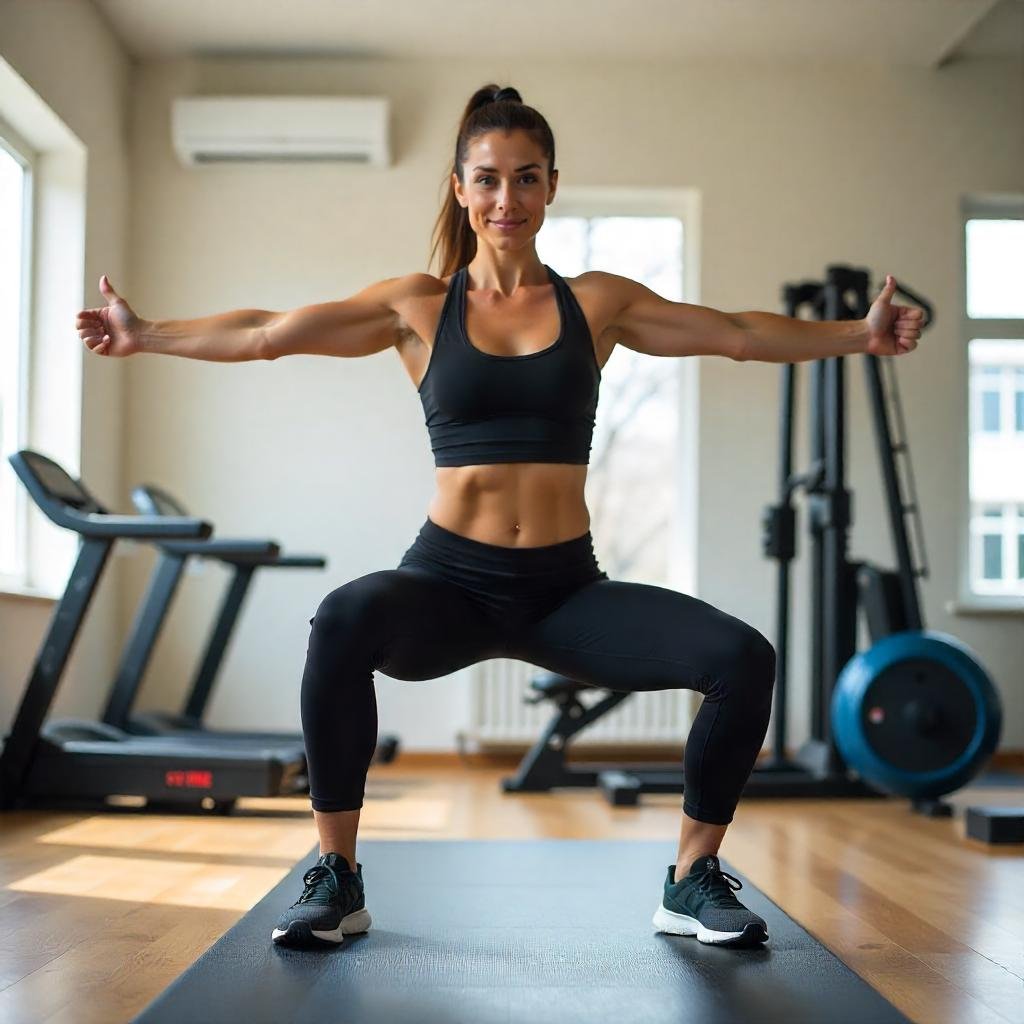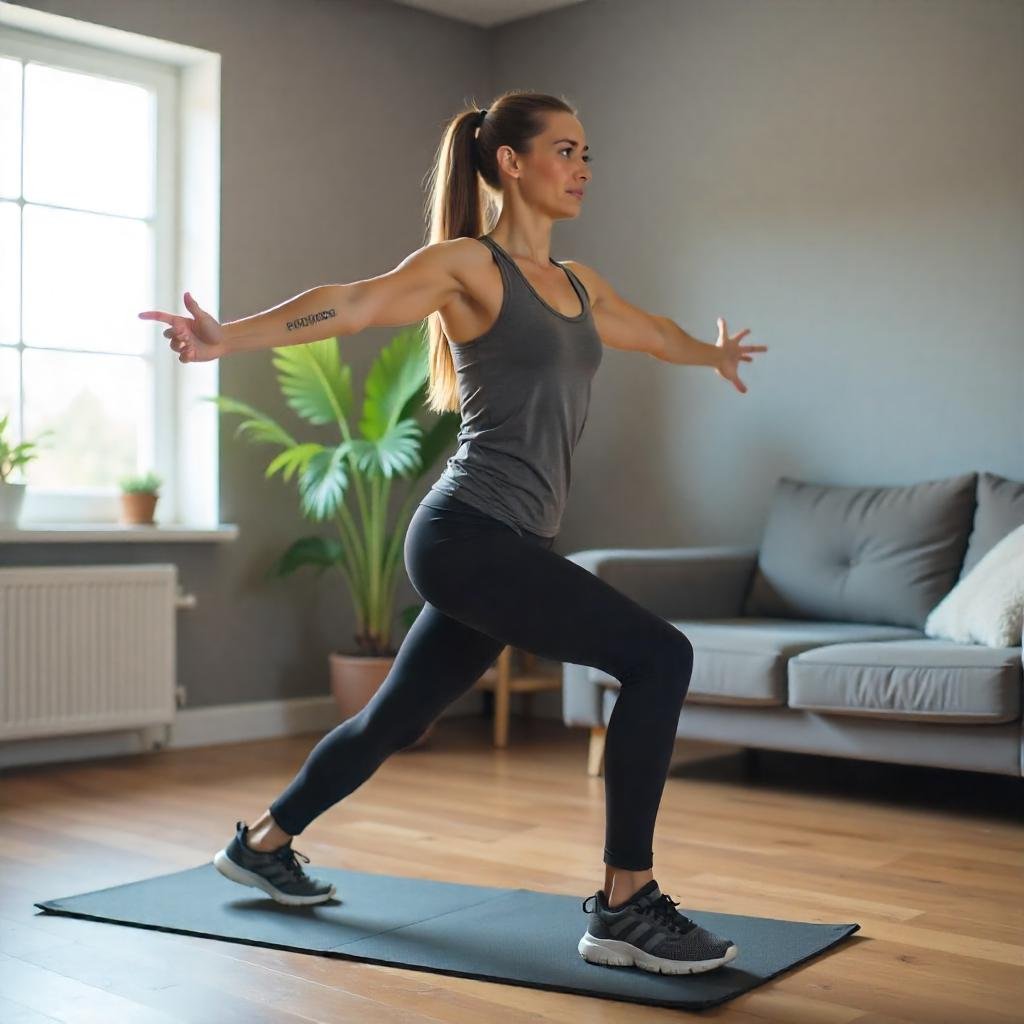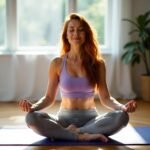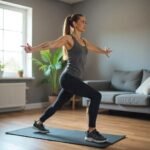Starting a fitness routine at home is a fantastic way to get in shape, save time, and avoid the hassle of a gym membership. Whether you’re a busy professional, a stay-at-home parent, or someone who simply prefers the comfort of their own space, home fitness exercises are an excellent solution for achieving your fitness goals. In this guide, we’ll explore the best home fitness exercises for beginners, how to create a personalized home workout plan, common mistakes to avoid, and tips for staying motivated.

Overview of Beginner Fitness Goals for Home Workouts
Before jumping into specific home fitness exercises, it’s essential to understand your fitness goals. As a beginner, these goals may vary based on your interests and current fitness level:
- Building Strength: Many beginners aim to develop muscle tone and strength. This can be achieved with bodyweight exercises or by incorporating resistance bands and dumbbells.
- Improving Endurance: If your goal is to boost stamina and cardiovascular health, cardio exercises like jogging in place, jumping jacks, and burpees can help.
- Weight Loss: Home fitness routines designed to burn calories—through a combination of cardio and strength training—are ideal for weight loss goals.
- Flexibility and Mobility: A focus on flexibility through yoga or stretching can help improve mobility and reduce muscle stiffness.
Understanding your goals will help you choose the right exercises for your fitness journey.
Top 5 Home Fitness Exercises for Beginners
Home fitness exercises are a great way to build a solid foundation without the need for expensive equipment. Here are five of the best home fitness exercises for beginners:
1. Bodyweight Squats
Benefits: Squats are a fantastic lower-body exercise that strengthens your quads, hamstrings, glutes, and core. They are simple, effective, and require no equipment.
How to Perform:
- Stand with your feet shoulder-width apart.
- Lower your hips down and back as if you’re sitting into a chair.
- Keep your chest lifted, knees behind your toes, and weight in your heels.
- Stand back up to the starting position.
Duration: Start with 2 sets of 10-15 reps.
Equipment Needed: None
Alternative: If you find regular squats challenging, try wall squats or use a chair to guide your movement.

2. Push-ups
Benefits: Push-ups are a great bodyweight exercise that targets your chest, shoulders, arms, and core. They build upper body strength and help improve overall body stability.
How to Perform:
- Start in a plank position with your hands placed slightly wider than shoulder-width apart.
- Lower your body toward the floor, keeping your elbows at a 45-degree angle.
- Push back up to the starting position.
Duration: Start with 2 sets of 5-10 reps.
Equipment Needed: None
Alternative: Modify by performing knee push-ups or incline push-ups with your hands on a chair or bench to reduce difficulty.
3. Planks
Benefits: Planks are one of the best core exercises. They engage your abs, back, shoulders, and glutes, helping to improve posture and overall strength.
How to Perform:
- Begin in a forearm plank position, with elbows directly under your shoulders.
- Keep your body in a straight line from head to heels.
- Hold the position for as long as possible, maintaining a flat back and avoiding sagging hips.
Duration: Start with 20-30 seconds per hold, increasing as you build core strength.
Equipment Needed: None
Alternative: If a full plank is too challenging, start with a knee plank and gradually work your way up.
4. Lunges
Benefits: Lunges work the legs and glutes, while also improving balance and coordination. They are perfect for toning the lower body.
How to Perform:
- Stand with your feet hip-width apart.
- Step forward with one leg, lowering your hips until both knees are bent at about 90-degree angles.
- Push off the front foot to return to the starting position.
Duration: Start with 2 sets of 10 reps per leg.
Equipment Needed: None
Alternative: For beginners, try stationary lunges (splitting the stance and lowering your body) instead of walking lunges.
5. Jumping Jacks
Benefits: Jumping jacks are an excellent cardiovascular exercise. They increase heart rate, improve coordination, and burn calories.
How to Perform:
- Start standing with your feet together and hands by your sides.
- Jump your feet out while raising your arms overhead.
- Jump back to the starting position.
Duration: Start with 1-2 minutes of continuous jumping jacks.
Equipment Needed: None
Alternative: If jumping is difficult, try low-impact jacks where you step side-to-side instead of jumping.

How to Create a Personalized Home Workout Plan
To make the most out of your home fitness exercises, creating a personalized workout plan is essential. Here’s how to get started:
- Assess Your Fitness Level: Be honest about where you are. If you’re completely new to exercise, start with basic movements and gradually increase intensity.
- Set Clear Goals: Identify whether your goal is to build strength, lose weight, or improve endurance. This will determine the focus of your workouts.
- Choose a Variety of Exercises: Incorporate a mix of strength, cardio, and flexibility exercises. A balanced routine could include bodyweight exercises, yoga, and a bit of cardio for overall fitness.
- Start Slow: Begin with 2-3 workout sessions per week and gradually add more as your body adapts.
- Rest and Recovery: Be sure to include rest days in your plan to allow muscles to recover. Overtraining can lead to fatigue and injury.
- Track Your Progress: Keep track of your workouts, reps, sets, and how your body feels. This will help you stay motivated and see progress over time.
Common Mistakes Beginners Make and How to Avoid Them
Even when working out at home, beginners often make common mistakes that can hinder progress or lead to injury. Here are some to watch out for:
Skipping Warm-ups: Warm-ups prepare your body for exercise and reduce the risk of injury. Start with 5-10 minutes of light cardio and dynamic stretching.
Overexerting Yourself: It’s easy to get excited, but pushing too hard in the beginning can lead to burnout or injury. Start with low-intensity exercises and gradually build up.
Neglecting Form: Maintaining good form is crucial, especially with bodyweight exercises. Focus on proper technique to avoid unnecessary strain on your muscles and joints.
Lack of Consistency: A home fitness routine works best when it’s consistent. Set realistic goals and stick to a regular workout schedule to see results.
Benefits of Consistency and Progress Tracking
Consistency is the key to success in any fitness journey. When you stick to your home fitness routine, you’ll notice improvements in strength, flexibility, and endurance over time. Tracking your progress is also crucial—it helps keep you motivated and allows you to adjust your workouts as needed. Whether you track reps, sets, or how you feel after each workout, progress tracking ensures you’re staying on course and achieving your fitness goals.

Tips for Beginners
Warm Up and Cool Down: Don’t skip your warm-up and cool-down routines. They help prevent injury and improve flexibility.
Rest Days Are Essential: Allow your muscles to recover by taking at least one or two rest days each week.
Hydrate and Eat Well: Proper nutrition and hydration are vital for recovery and overall performance.
Start Slow: It’s important to listen to your body. If a workout feels too difficult, modify it until you gain more strength and endurance.
Set Achievable Goals: Start small and gradually increase intensity. Celebrate your milestones, no matter how small they may seem.
Are you ready to get started on your fitness journey? Home fitness exercises are a perfect way for beginners to stay active and healthy. Whether you have 20 minutes or an hour, you can easily fit a workout into your day without needing fancy equipment or a gym membership. Begin with simple exercises like squats, push-ups, and lunges, and as you get stronger, you can incorporate more challenging movements. To get started, check out our beginner’s workout guide and start your fitness transformation today!
Conclusion
Starting a fitness routine at home has never been easier, and home fitness exercises offer a convenient and effective way to get fit. By focusing on basic exercises, creating a personalized workout plan, and avoiding common mistakes, beginners can build a strong foundation for a healthier lifestyle. Consistency is the key to success, so take it one step at a time and celebrate your progress along the way. Your fitness journey starts at home—let’s get moving!
Most Frequently Asked Questions About Home Fitness Exercises
1. Can I get in shape by doing home fitness exercises?
Yes, absolutely! You can achieve your fitness goals with home workouts, whether it’s building strength, improving endurance, or losing weight. The key is consistency and gradually increasing the intensity of your workouts.
2. Do I need special equipment for home fitness exercises?
No, many effective home fitness exercises require little to no equipment. Bodyweight exercises like squats, push-ups, lunges, and planks are great for building strength and endurance. However, if you want to add variety, you can incorporate resistance bands or dumbbells.
3. How often should I do home fitness exercises?
For beginners, aim to work out at least 3-4 times per week. This allows you to build strength and endurance while giving your body time to rest and recover. As you progress, you can increase the frequency or intensity of your workouts.
4. How long should each home workout session last?
Home workout sessions for beginners typically last between 20 to 45 minutes. This includes a warm-up, the main workout, and a cool-down. Starting with shorter sessions is perfectly fine, and you can gradually increase the duration as your fitness level improves.
5. Can home fitness exercises help with weight loss?
Yes, home fitness exercises can be effective for weight loss, especially when combined with a healthy diet. Cardio exercises, strength training, and a consistent routine help burn calories and increase muscle mass, which boosts metabolism and promotes fat loss.
6. What are the best home fitness exercises for beginners?
Some of the best exercises for beginners include:
- Bodyweight squats
- Push-ups
- Planks
- Lunges
- Jumping jacks These exercises target multiple muscle groups and can be modified to suit different fitness levels.
7. How can I stay motivated to do home fitness exercises regularly?
Staying motivated can be challenging, but setting small, achievable goals and tracking your progress can help. Mix up your routine to keep things interesting, find a workout buddy (even virtually), or reward yourself when you hit milestones. Consistency is key to making exercise a habit!







2 thoughts on “The Best Home Fitness Exercises for Beginners: Your Ultimate Guide to Working Out at Home”